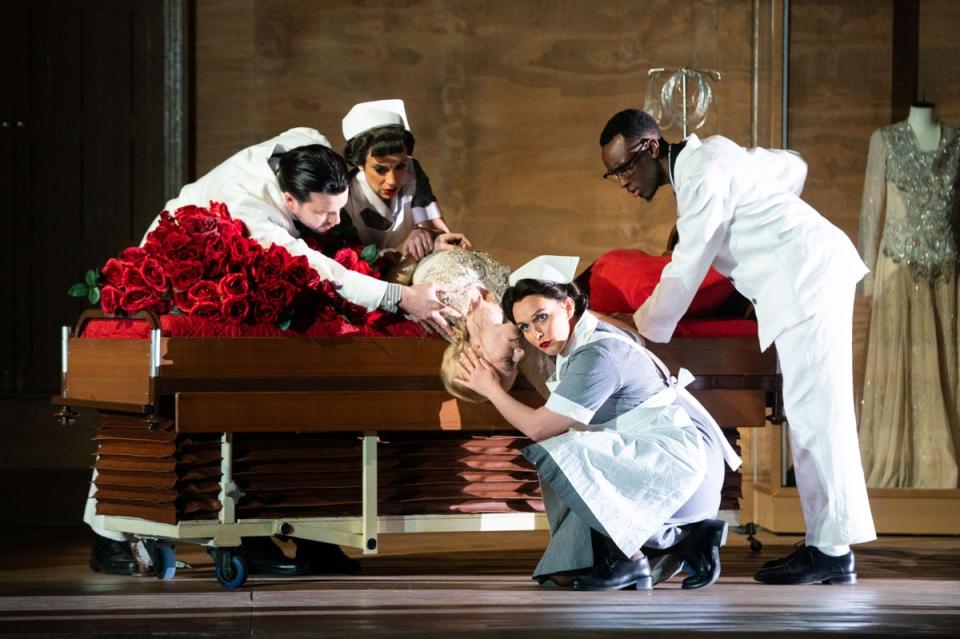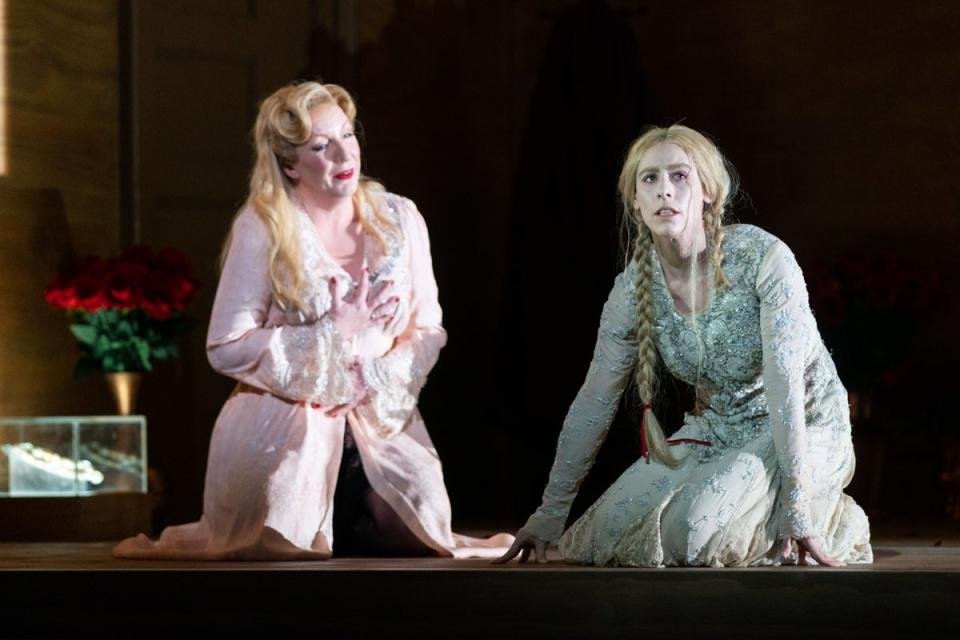The Dead City at the London Coliseum review: ENO’s lyrical ode to grief is almost unbearably poignant

Erich Korngold’s Dead City deals with an emotional conflict most of us can empathise with: a man, Paul, grieving for his dead wife, Marie, is racked with guilt about his infatuation with a dancer, Marietta, who uncannily resembles her. It also has one of the most hummable melodies in the entire operatic repertory, Marietta’s Song, which conveys the pain of love and loss with almost unbearable poignancy.
Why, then, has Die tote Stadt, as it’s usually known, never been done before at ENO? There are historical reasons to account for the work’s disappearance after its initial popularity following World War in the 1920s. But Paul’s over-extended hallucinatory dreams are problematic to stage. And the lead tenor role is an extremely taxing one.
In Annilese Miskimmon’s production, with sets by Miriam Buether, costumes by Nicky Gillibrand and lighting by James Farncombe, one is hardly unaware of these problems, but at its best it allows us to respond to the work’s spine-tingling scenario and certainly to revel in its luscious score.
It didn’t help that Rolf Romei, for whom an apology was made, was audibly struggling from time to time, though made a very creditable stab at the role of Paul. More secure was Allison Oakes as a feisty, flirtatious Marietta, also providing an aptly disembodied Voice of Marie from behind the stage. Her Wagnerian credentials guaranteed the heft that both the lead roles ideally call for.
Sarah Connolly was exemplary as Paul’s housekeeper, Brigitta, while Audun Iversen was eloquent as his friend, Franz. Smaller parts were well taken by Rhian Lois, Clare Presland, Innocent Masuku, William Morgan and Hubert Francis. Lauren Bridle acted the part of Marie.

Something of the brooding decay of the dead city outside (Bruges) is evoked by, in Miskimmon’s words, “the top smoke-effect team in the West End”. Inside, a sterile wood-panelling effect serves for the morbid mausoleum to Marie’s memory, though in this production the gloomy city dramatically invades the house.
The grand guignol of Paul’s over-extended hallucinations, which spread from Act 2 into the outer acts, take in an apparition of his dead wife, a rehearsal of the scene from Meyerbeer’s Robert le Diable in which nuns rise from their graves to perform a lascivious dance, and a Corpus Christi procession led by a bishop. None of it was quite outrageous enough, but I liked the entry of the choirboys down the chimney, in their pristine white surplices, with the braid of Maria’s hair mounted like an altarpiece above the fireplace mantel.
Korngold’s virtuoso score, handled impressively by Kirill Karabits, has all the jewel-like glitter of Strauss’s Salome with a lyrical flow to match Puccini. Paul’s struggle to come to terms with his grief resonates with our age as much as it did for its first postwar audiences. With the heart-tugging Marietta’s Song at its emotional centre, you won’t be left unmoved.
London Coliseum, to April 8; eno.org

 Yahoo News
Yahoo News 